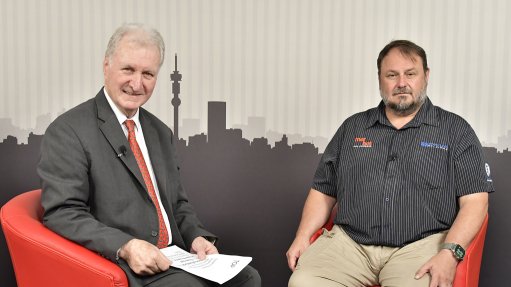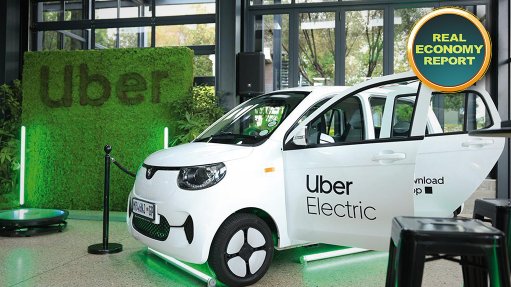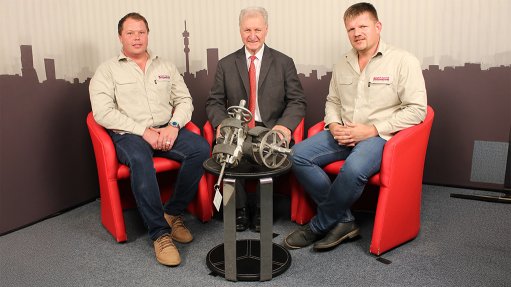Mobility Vision
Gauteng-based transport economist Andrew Marsay earlier in February detailed his vision for a high-density, high-value public transport system in South Africa, delivered in a presentation at the i-Transport and UATP conference, held in Sandton. Engineering News senior deputy editor Irma Venter asked him about the transformation his vision requires.
You believe that a high-density, high-value public transport system is the best answer for South Africa. What does this system entail?
In order to allow more people from more parts of Gauteng to participate effectively in the modern economy, existing and emerging higher-density, high-value nodes need to be efficiently linked with the main existing, and emerging, residential nodes.
Current public transport modes, and routes, tend to serve historic arrangements of ferrying people from townships to industrial areas and older employment nodes. Their inherited spatial footprint means that they cannot perform this linking function.
Only higher-quality modes such as modernregional rail (like the Gautrain) have a strong enough impact on travel patterns and spatial development trends to achieve the beneficial impact of improved accessibility to the modern economy.
Even though the cost is higher, the benefit equation is much better than when investing in existing modes that do not achieve this purpose. This is because they add urban economic efficiency gains to conventional transport economic benefits.
In working towards this system, you have identified two weak points, with nontolled freeways being the first. Why is this hampering pubic transport development?
Freeways encourage the use of cars and also consolidate low-density development patterns that, in the long-term, reduce urban economic efficiency.
Freeways that are ‘free at the point of use’ – untolled – exacerbate this effect. While beneficial for the motorised sections of the community, keeping commuter freeways free at the point of use undermines efforts to improve public transport.
It also diverts public money that could otherwise be spent on new, improved high-quality public transport systems.
As such, untolled freeways are contrary to national, provincial and metropolitan transport policies that all call for the prioritisation of public transport investment over road investment.
The second weak point you identified is the Passenger Rail Agency of South Africa (PRASA), despite the multibillion- rand recapitalisation project at Metrorail. Why so?
PRASA tends to prioritise capital spending over operational efficiency improvements.
It is investing in rolling stock and infrastructure improvements, but ignoring the reality that its inefficient, nonmarket-orientated operating model is seeing commuter rail’s market share bleed away.
This wrong prioritisation is a direct consequence of an industry structure that confuses public-sector control with public benefit.
Notwithstanding this, a short window of opportunity exists for linking some PRASA routes with current and hopefully also future modern rapid rail services.
This could be done either by building additional rapid rail routes using PRASA’s Cape gauge, or by building links between some existing PRASA routes and interchange stations on existing and future rapid rail routes. But the very minimum conditions for this idea to be useful will be for PRASA to invite operating support from known, successful rail operators and to have consolidated service management arrangements with the modern rapid rail system.
What should the role of minibus taxis be in a high-density, high-value public transport model?
The minibus-taxi mode is well suited to our current low-density environment.
Because the industry is privately operated, it adapts well to changing development trends.
Whether we go for higher-density, higher- value economic development based on a more extensive network of modern public transport modes, or resign ourselves to low-density inefficiency, the minibus-taxi industry will continue serving the large spaces that will always exist between formal public transport routes.
You mentioned the need to build a new consensus around an ‘urban economic- efficiency-based future’ for Gauteng. What do you mean?
Unlike in the early 2000s, when the Gauteng economy was growing at 8% a year, we now have slow growth and a tendency for stakeholders to withdraw into the safety of their ideological shells.
Yet, if ever there was a time for the ‘deideologisation’ of decision-making, in transport especially, it is now. Decisions taken, postponed or simply avoided now will affect our future for better or worse for decades to come.
The most likely scenario for the future is always the one of least resistance. In transport terms, this would mean my ‘go with the flow’ scenario that accepts low urban density, low economic growth and low transport quality as inevitable.
The outcome will be a low-grade form of social equity that some might call mediocrity.
But, with careful choices of the battles to be fought, the alliances to be struck and the emphases to be made, a much brighter urban future could be achieved – the urban economic efficiency scenario of which I have spoken.
Achieving this will require:
• Proactive engagement between provincial and metropolitan transport authorities to determine which transport modes are the best catalysts for such a future – and which are merely supportive of incremental development.
• PRASA to invite international best practice assistance with operations management.
• Revisiting the metropolitan freeway tolling issue within the broader context of integrated transport planning, with explicit links between toll compliance levels and public transport funding.
To achieve consensus of this nature among all transport stakeholders, there must be calls for the use of a multicriteria decision-making matrix in which all, including civil society, participate in order to arrive at an outcome that all can own.
Article Enquiry
Email Article
Save Article
Feedback
To advertise email advertising@creamermedia.co.za or click here
Comments
Announcements
What's On
Subscribe to improve your user experience...
Option 1 (equivalent of R125 a month):
Receive a weekly copy of Creamer Media's Engineering News & Mining Weekly magazine
(print copy for those in South Africa and e-magazine for those outside of South Africa)
Receive daily email newsletters
Access to full search results
Access archive of magazine back copies
Access to Projects in Progress
Access to ONE Research Report of your choice in PDF format
Option 2 (equivalent of R375 a month):
All benefits from Option 1
PLUS
Access to Creamer Media's Research Channel Africa for ALL Research Reports, in PDF format, on various industrial and mining sectors
including Electricity; Water; Energy Transition; Hydrogen; Roads, Rail and Ports; Coal; Gold; Platinum; Battery Metals; etc.
Already a subscriber?
Forgotten your password?
Receive weekly copy of Creamer Media's Engineering News & Mining Weekly magazine (print copy for those in South Africa and e-magazine for those outside of South Africa)
➕
Recieve daily email newsletters
➕
Access to full search results
➕
Access archive of magazine back copies
➕
Access to Projects in Progress
➕
Access to ONE Research Report of your choice in PDF format
RESEARCH CHANNEL AFRICA
R4500 (equivalent of R375 a month)
SUBSCRIBEAll benefits from Option 1
➕
Access to Creamer Media's Research Channel Africa for ALL Research Reports on various industrial and mining sectors, in PDF format, including on:
Electricity
➕
Water
➕
Energy Transition
➕
Hydrogen
➕
Roads, Rail and Ports
➕
Coal
➕
Gold
➕
Platinum
➕
Battery Metals
➕
etc.
Receive all benefits from Option 1 or Option 2 delivered to numerous people at your company
➕
Multiple User names and Passwords for simultaneous log-ins
➕
Intranet integration access to all in your organisation


















